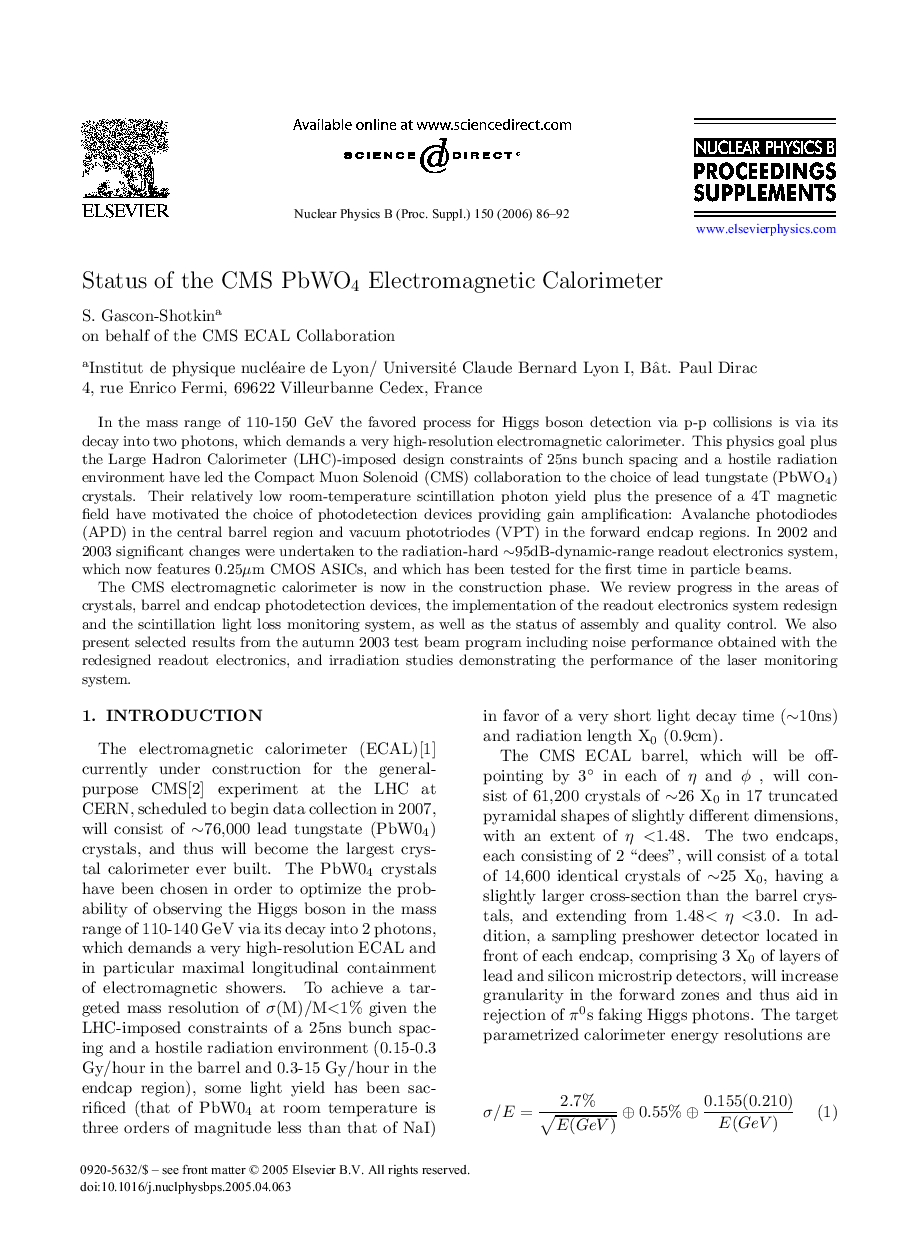| Article ID | Journal | Published Year | Pages | File Type |
|---|---|---|---|---|
| 1847210 | Nuclear Physics B - Proceedings Supplements | 2006 | 7 Pages |
In the mass range of 110-150 GeV the favored process for Higgs boson detection via p-p collisions is via its decay into two photons, which demands a very high-resolution electromagnetic calorimeter. This physics goal plus the Large Hadron Calorimeter (LHC)-imposed design constraints of 25ns bunch spacing and a hostile radiation environment have led the Compact Muon Solenoid (CMS) collaboration to the choice of lead tungstate (PbWO4) crystals. Their relatively low room-temperature scintillation photon yield plus the presence of a 4T magnetic field have motivated the choice of photodetection devices providing gain amplification: Avalanche photodiodes (APD) in the central barrel region and vacuum phototriodes (VPT) in the forward endcap regions. In 2002 and 2003 significant changes were undertaken to the radiation-hard ∼95dB-dynamic-range readout electronics system, which now features 0.25μm CMOS ASICs, and which has been tested for the first time in particle beams.The CMS electromagnetic calorimeter is now in the construction phase. We review progress in the areas of crystals, barrel and endcap photodetection devices, the implementation of the readout electronics system redesign and the scintillation light loss monitoring system, as well as the status of assembly and quality control. We also present selected results from the autumn 2003 test beam program including noise performance obtained with the redesigned readout electronics, and irradiation studies demonstrating the performance of the laser monitoring system.
